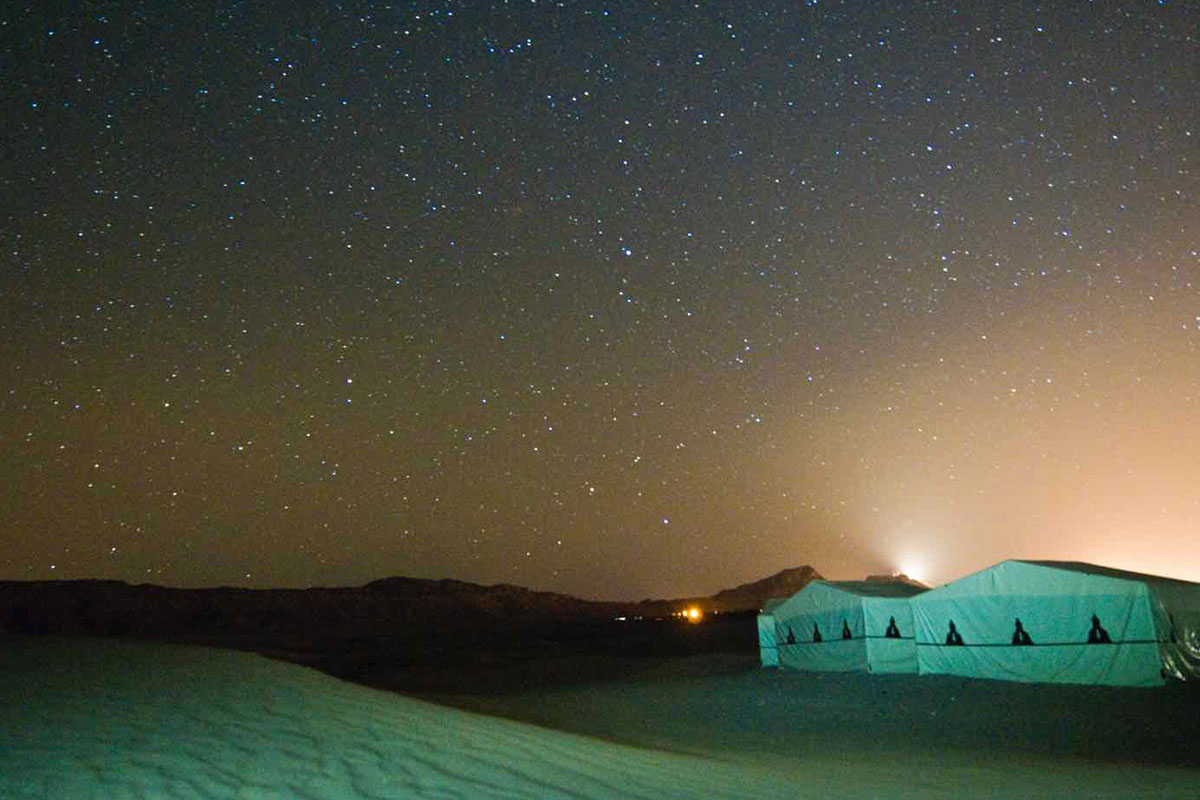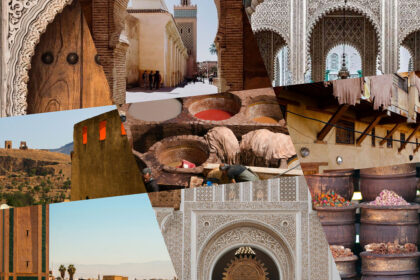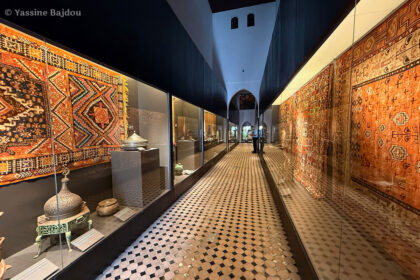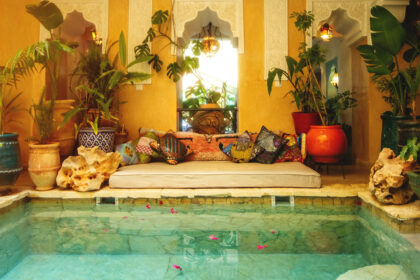Morocco’s vast Sahara Desert transforms into nature’s most spectacular planetarium after sunset. Far from city lights and urban noise, the desert’s crystal-clear atmosphere reveals celestial wonders that remain hidden to most of the world. With minimal light pollution and exceptional visibility conditions, Morocco’s desert regions offer some of Earth’s finest stargazing experiences.
The Sahara’s unique geographic position, combined with its arid climate and high altitude plateaus, creates perfect conditions for astronomical observation. During clear nights, visitors can witness the Milky Way stretching across the sky like a luminous river, observe distant galaxies, and catch meteor showers that paint streaks of light across the darkness.
A three-day stargazing desert tour offers the perfect balance of desert exploration and celestial discovery. This carefully curated experience combines traditional Berber hospitality with modern astronomical guidance, allowing travelers to connect with both ancient navigation techniques and contemporary space science. Whether you’re an astronomy enthusiast or simply seeking an unforgettable adventure, this tour promises memories that will last a lifetime.
Day 1: Arrival and Desert Immersion
Your stargazing adventure begins from one of Morocco’s major cities. Most tours depart from Marrakech, Fes, or Casablanca.
Upon arrival at the desert camp, typically located near the famous Erg Chebbi dunes or similar locations, the vast expanse of golden sand creates an immediate sense of otherworldly beauty. The afternoon light casts long shadows across the dunes, creating a landscape that shifts and changes with the sun’s position.
Desert camps range from traditional Berber tents to more luxurious desert lodges, all designed to provide comfort while maintaining authentic cultural experiences. The process of settling into desert life begins immediately, with guides explaining the importance of sun protection, proper hydration, and desert safety protocols.
The stark beauty of the desert during daylight hours provides the perfect contrast to the celestial show that awaits after dark. Temperature differences between day and night in the desert can exceed 30 degrees Celsius, making proper preparation essential for comfort during stargazing sessions.
As twilight approaches, the desert’s transformation begins. Professional astronomy guides introduce basic stargazing concepts, explaining how the lack of atmospheric interference and light pollution creates ideal viewing conditions. The desert’s dry air and stable atmospheric conditions mean stars appear brighter and steadier than in most locations worldwide.
Initial stargazing sessions focus on orientation and identification of major constellations visible in the Moroccan sky. Guides typically provide telescopes, star charts, and red-filtered flashlights to preserve night vision. The evening introduction covers constellations like Ursa Major, Cassiopeia, and seasonal highlights such as Orion during winter months.
Professional-grade telescopes reveal details invisible to the naked eye, including Saturn’s rings, Jupiter’s moons, and distant nebulae. The experience combines traditional Berber knowledge of desert navigation with modern astronomical understanding, creating a rich educational foundation for the days ahead.
Day 2: Full Day of Desert Exploration and Night Sky Observation
The second day begins with sunrise over the dunes, offering photographers golden hour opportunities and spectacular views across the endless sand sea. Morning activities cater to different interests and energy levels, with options including camel trekking, sandboarding, or cultural visits to nearby Berber villages.
Camel trekking provides authentic desert transportation experiences, following routes used by ancient caravan traders. These gentle animals move rhythmically across the sand, offering unique perspectives of the desert landscape and opportunities to understand how nomadic peoples navigated using celestial markers.
Sandboarding down steep dunes provides adventure seekers with thrills while demonstrating the desert’s dynamic nature. The activity requires minimal equipment but maximum respect for the environment and safety guidelines provided by experienced guides.
Village visits offer cultural immersion opportunities, where travelers learn about traditional desert life, including water conservation techniques, traditional crafts, and the role of astronomy in agricultural and navigation practices.
The afternoon heat provides perfect timing for rest and preparation for the evening’s main event. Desert camps typically offer shaded areas, traditional mint tea, and light meals designed to maintain energy without causing discomfort during nighttime activities.
This period includes comprehensive astronomy education, covering topics such as light pollution effects, telescope operation, and night photography techniques. Guides explain the relationship between moon phases and visibility conditions, helping participants understand why certain celestial objects appear more prominently on specific nights.
Photography enthusiasts receive instruction on camera settings for night sky photography, including long exposure techniques, ISO settings, and composition tips for capturing the Milky Way. Understanding these technical aspects enhances both the immediate experience and long-term memories through stunning photographs.
The evening’s main stargazing session represents the tour’s highlight, offering unparalleled access to celestial wonders. Professional guides use laser pointers to identify constellations, planets, and other celestial objects, creating an interactive learning experience that engages participants of all ages.
The Milky Way, visible with stunning clarity in the desert’s dark skies, becomes the evening’s centerpiece. Guides explain galactic structure, stellar formation, and our solar system’s position within the galaxy. Seasonal variations mean different constellations and celestial events are visible throughout the year.
Advanced telescopes reveal details such as Saturn’s ring system, Jupiter’s Great Red Spot, and the Andromeda Galaxy. Meteor showers, when occurring during visit dates, provide spectacular displays of natural fireworks across the desert sky.
Mobile astronomy apps and traditional star charts help participants continue exploration independently, building skills for future stargazing adventures. The combination of professional guidance and personal discovery creates lasting appreciation for astronomical sciences.
Day 3: Sunrise Experience and Departure
The final day begins before dawn, positioning participants on elevated dunes for spectacular sunrise viewing. The transition from star-filled darkness to golden desert dawn demonstrates the continuous cycle of celestial movements that have guided human navigation for millennia.
Sunrise timing varies seasonally, but the experience consistently provides opportunities to observe how atmospheric conditions affect visibility of celestial bodies. Morning light gradually reveals the vast desert landscape that served as the previous night’s stargazing theater.
This timing allows final telescope observations of planets still visible in the dawn sky, particularly Venus when positioned as the “morning star.” The contrast between nighttime stellar observations and dawn planetary viewing provides comprehensive astronomical education.
The final morning includes reflection time around traditional campfires or in comfortable lodge settings, allowing participants to share experiences and ask remaining questions about astronomical phenomena observed during the tour.
Photo sharing sessions help participants organize and understand the images captured during the tour, with guides providing additional context about specific celestial objects photographed. Professional photography tips ensure participants can recreate similar images in future stargazing adventures.
Cultural exchange continues during departure preparations, with opportunities to learn more about Berber traditions, desert survival techniques, and the historical significance of astronomy in North African cultures.
Practical Information about Morocco Desert Stargazing Tour
Best Time to Visit
Optimal stargazing conditions in Morocco’s desert occur during specific seasons and moon phases. The clearest skies typically occur from October through May, avoiding the intense summer heat and occasional sandstorms that can reduce visibility.
| Season | Temperature Range | Sky Clarity | Milky Way Visibility | Recommended Level |
|---|---|---|---|---|
| October-December | 15-25°C | Excellent | Moderate | High |
| January-March | 5-20°C | Outstanding | Low | Highest |
| April-June | 20-35°C | Very Good | High | High |
| July-September | 25-45°C | Good | Excellent | Moderate |
New moon phases provide optimal conditions for deep sky observation, while quarter moons offer enough illumination for comfortable navigation without overwhelming stellar visibility. Planning around moon phases significantly enhances the stargazing experience.
Weather patterns in the Sahara remain relatively stable, with clear skies prevalent throughout most of the year. However, occasional sandstorms during spring months can affect visibility, making flexible scheduling important for optimal experiences.
Safety and Environmental Considerations
Desert safety requires understanding environmental challenges and following experienced guide recommendations. Temperature variations between day and night necessitate appropriate clothing layers, including warm jackets for nighttime stargazing sessions.
Hydration remains critical in desert environments, even during cooler months. Tour operators typically provide sufficient water supplies, but participants should maintain regular fluid intake to prevent dehydration during extended outdoor activities.
Environmental respect includes following Leave No Trace principles, staying on designated paths, and supporting local communities through responsible tourism practices. The desert ecosystem, while appearing barren, supports diverse wildlife that requires protection from human impact.
Navigation in desert environments requires professional guidance, as GPS systems can be unreliable and traditional landmarks change due to shifting sands. Staying with tour groups and following guide instructions ensures safety while allowing maximum exploration opportunities.
FAQs about the 3-Day Stargazing Desert Tour in Morocco
What makes Morocco’s desert ideal for stargazing? Morocco’s Sahara Desert offers exceptional stargazing conditions due to minimal light pollution, dry atmospheric conditions, and high altitude locations. The combination of clear skies, stable air masses, and geographic positioning provides some of the world’s best amateur astronomy viewing opportunities.
Can beginners enjoy the stargazing tour, or is prior knowledge needed? No prior astronomical knowledge is required. Professional guides provide comprehensive instruction suitable for all experience levels, from complete beginners to advanced astronomy enthusiasts. The tour is designed to be educational and accessible to participants of all backgrounds.
How cold does it get at night in the desert? Desert temperatures can drop significantly after sunset, with nighttime temperatures often 20-30 degrees Celsius lower than daytime highs. Winter nights can reach near-freezing temperatures, while summer nights typically remain comfortable in the 15-25°C range.
Are there facilities like toilets and showers during the tour? Most desert camps provide basic bathroom facilities and washing areas, though luxury levels vary by tour operator. Higher-end tours offer private bathroom facilities and hot showers, while basic tours provide shared facilities with essential amenities.
Is the tour suitable for families with children? Yes, stargazing tours are family-friendly and particularly educational for children. However, parents should consider that activities involve late night hours and desert conditions. Children typically find the experience exciting and educational, developing lasting interests in astronomy.
What kind of equipment is provided for stargazing? Professional tour operators provide telescopes, star charts, red-filtered flashlights, and other astronomical equipment. Some tours also offer binoculars and photography equipment. Participants don’t need to bring specialized astronomy equipment.
Can I see the Milky Way on this tour? Yes, the Milky Way is visible during most times of year in Morocco’s desert, with optimal viewing from April through September. The galaxy’s visibility depends on moon phases and seasonal positioning, with summer months offering the most spectacular displays.
How do I prepare for the desert climate? Preparation includes bringing layered clothing for temperature variations, sun protection for daytime activities, and comfortable walking shoes. Tour operators typically provide packing lists with specific recommendations based on travel dates and seasonal conditions.
Are there any health risks to be aware of? Desert tours are generally safe for healthy individuals. Primary considerations include dehydration prevention, sun exposure protection, and temperature regulation. Individuals with respiratory conditions should consult healthcare providers regarding dust exposure concerns.
A three-day stargazing desert tour in Morocco offers an unparalleled opportunity to witness the universe’s grandeur while experiencing one of Earth’s most remarkable landscapes. The combination of pristine dark skies, expert astronomical guidance, and rich cultural immersion creates memories that extend far beyond typical vacation experiences. From the first glimpse of the Milky Way stretching across an unpolluted sky to the final sunrise over endless dunes, every moment contributes to a transformative adventure.
The tour’s carefully balanced structure ensures both astronomical education and cultural appreciation, making it suitable for travelers seeking authentic experiences rather than simple tourism. Whether you’re planning a romantic getaway, family adventure, or solo journey of discovery, Morocco’s desert stargazing tours provide the perfect setting to reconnect with the natural world and gain new perspectives on our place in the cosmos. Begin planning your celestial adventure today and prepare to see the night sky as you never have before.













